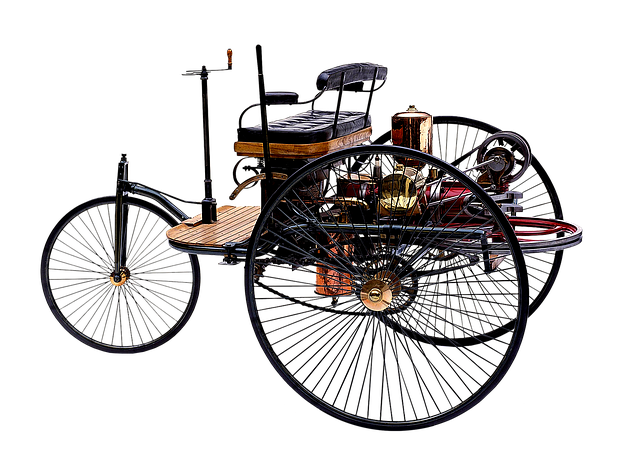Learn how to register your car in California with our step-by-step guide. Understanding the state’s requirements is key, including preparing essential documents and undergoing a crucial DMV VIN verification process. We’ll walk you through gathering all necessary paperwork, completing the application at the DMV office, and securing your license plate and registration papers. By following these steps, you’ll ensure a smooth car registration experience in California.
- Understand California Car Registration Requirements
- Gather Necessary Documents for DMV Visit
- Perform VIN Verification: Steps and Importance
- Complete Application Process at the DMV Office
- Obtain License Plate and Vehicle Registration Papers
Understand California Car Registration Requirements

Before registering your car in California, it’s crucial to understand the state’s specific requirements. The California Department of Motor Vehicles (DMV) mandates several steps for car registration, including a thorough vehicle inspection and verification of the Vehicle Identification Number (VIN). This process ensures that all vehicles on California roads meet safety and environmental standards.
One essential component is the DMV VIN verification, which involves checking the VIN’s accuracy and matching it to the vehicle’s characteristics. You can facilitate this process with a mobile VIN verification or inspection, making it easier and more convenient for you. This approach not only saves time but also ensures that your car registration goes smoothly, adhering to California’s stringent regulations.
Gather Necessary Documents for DMV Visit

Before visiting the California DMV, ensure you have all the essential documents for a smooth registration process. The list includes your vehicle’s title, which you’ll need to prove ownership; a valid driver’s license or ID card; and proof of insurance, as per state law. Additionally, gathering your Vehicle Identification Number (VIN) is crucial. This unique code can be found on the vehicle’s identification plate or in its owner’s manual.
Performing a DMV VIN verification is an important step to ensure the vehicle’s history is clean and accurate. You can facilitate this process with a mobile vin verifier or even arrange for a mobile vin inspection before your visit, saving you time at the DMV.
Perform VIN Verification: Steps and Importance

Before registering your car in California, it’s crucial to complete a Vehicle Identification Number (VIN) verification process through the DMV. This step is essential to ensure that the vehicle you’re intending to register is genuine and has not been reported stolen. The process involves using the unique 17-character VIN code to cross-reference the vehicle’s information with the manufacturer’s records.
Performing a mobile VIN verification, often facilitated by a dedicated mobile vin verifier or inspection app, streamlines this process. By entering your VIN into the designated platform, you can access instant data on the vehicle’s history, including ownership records, accident reports, and maintenance logs. This digital approach is not only convenient but also allows for a thorough inspection, ensuring that your car meets all legal requirements before final registration at the DMV.
Complete Application Process at the DMV Office

To complete the car registration process in California, you’ll need to visit a local Department of Motor Vehicles (DMV) office. Bring all required documents, including your vehicle’s registration from its previous state of residence, proof of insurance, and valid identification. A key step in this process is the DMV VIN verification, ensuring your vehicle’s unique identifier matches the records. This usually involves presenting the car’s title, purchase agreement, or a valid registration from another state.
Once your documents are in order, a DMV representative will guide you through the application process. They’ll verify your information, conduct a mobile vin inspection (or have you complete a self-reported vin inspection) to confirm vehicle details, and process your registration fee. After successful verification, they’ll issue your California vehicle registration plates, and you’ll be officially registered to drive on California roads.
Obtain License Plate and Vehicle Registration Papers

After completing the registration process at the California DMV, it’s time to obtain your vehicle’s license plate and registration papers. This crucial step ensures that your car is legally recognized on California roads. The first order of business is to verify the Vehicle Identification Number (VIN) through a trusted method like a mobile VIN verifier or performing a simple inspection yourself. This verification process, often done by checking the DMV records, confirms the vehicle’s authenticity and history, which is essential for safety and insurance purposes.
Once confirmed, you’ll receive your license plate, typically attached to a frame with all necessary paperwork. Keep these documents secure as they’re required for future registration renewals or any involvement with law enforcement. Some California residents prefer using mobile VIN verification services for their convenience; these apps allow you to complete the initial VIN inspection from the comfort of your home, saving time and potential trips to the DMV.
Registering a car in California involves understanding state requirements, gathering essential documents, and successfully completing the application process. After ensuring your vehicle’s compliance through a crucial DMV VIN verification, you’ll be on your way to securing license plates and official registration papers. This comprehensive guide navigates each step, making the process seamless for both new and existing California residents.



